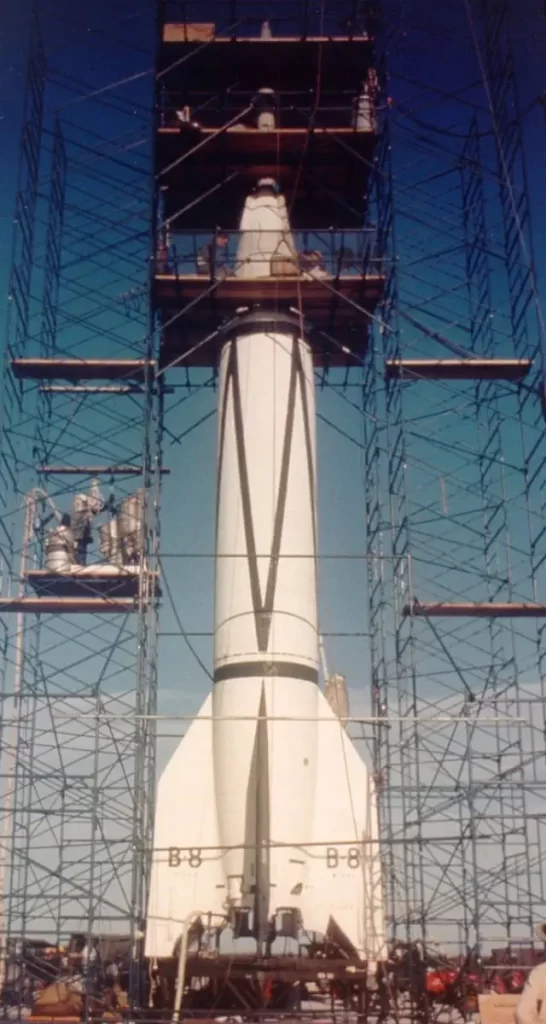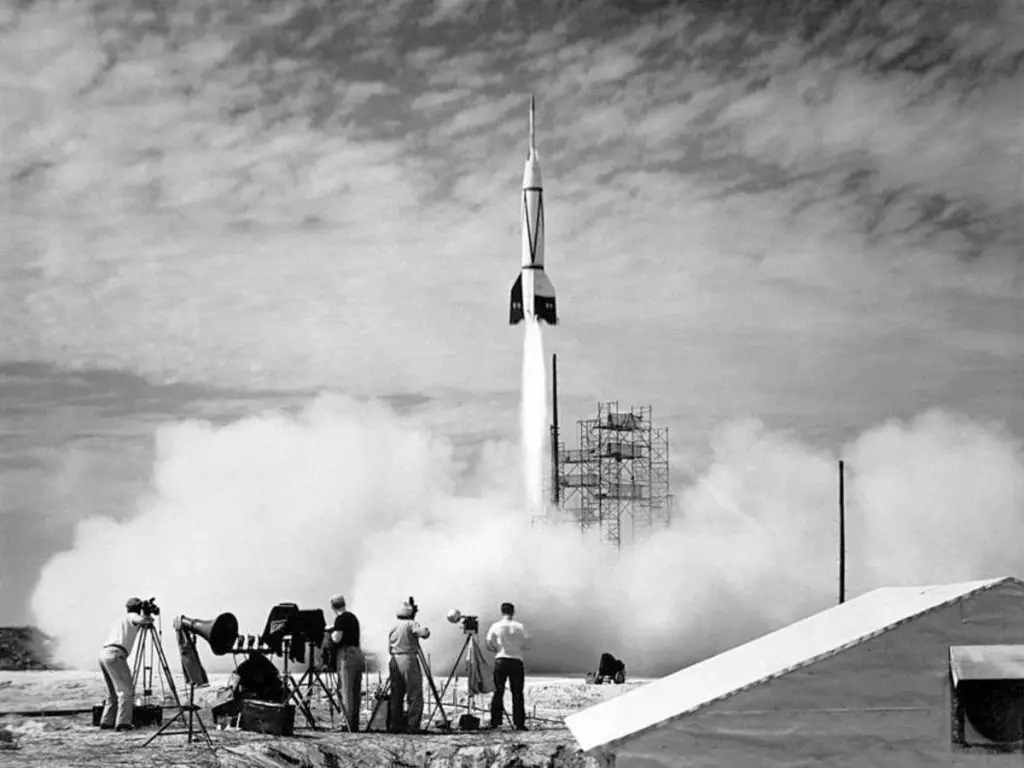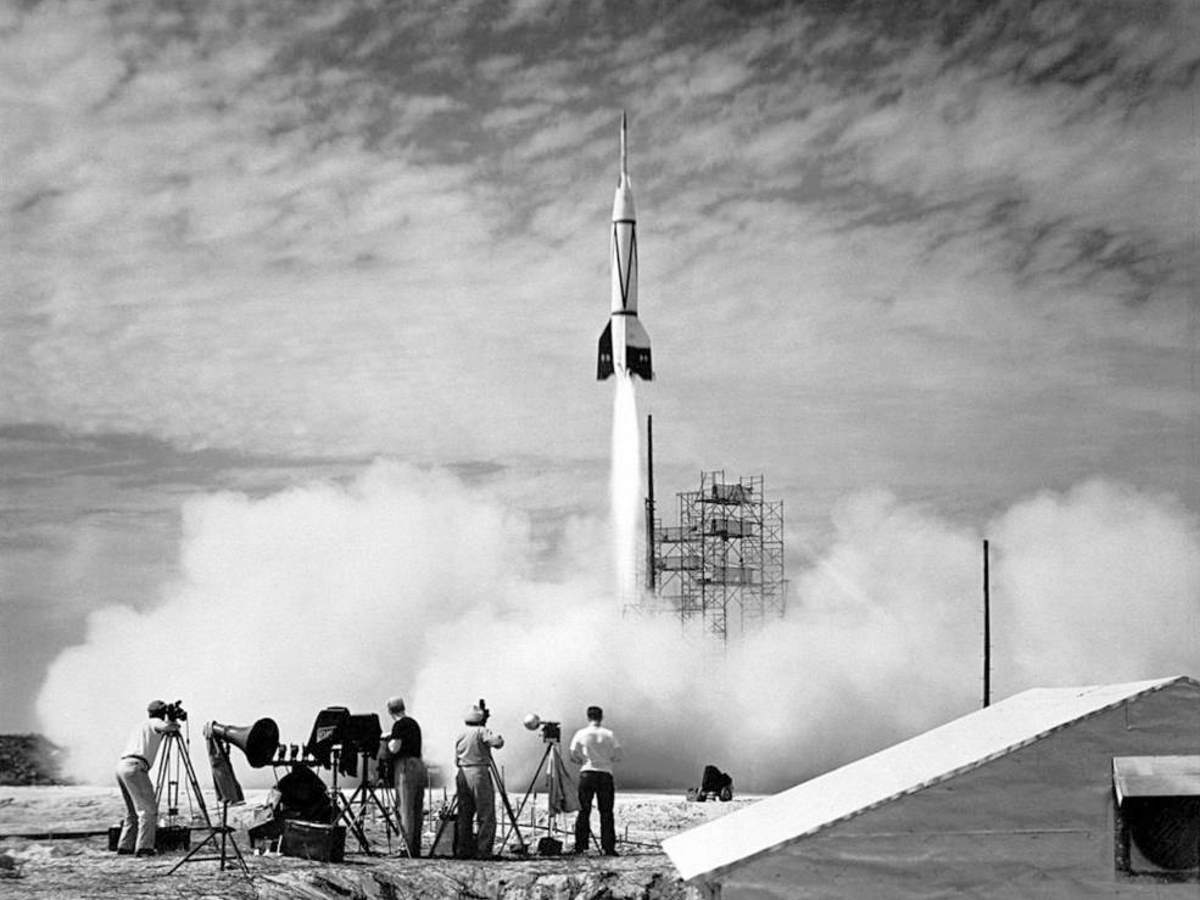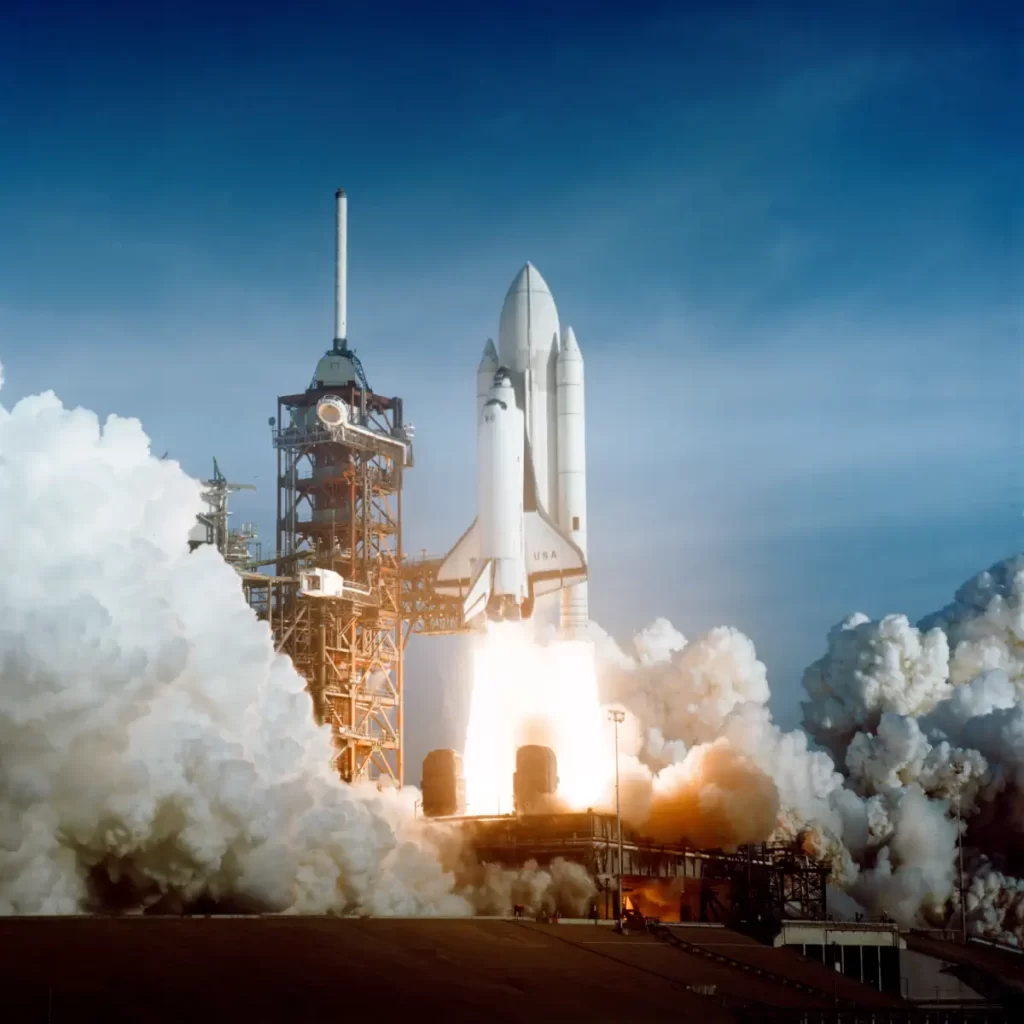On July 24, 1950, Bumper 8, a two-stage rocket, combining German (V-2) and American technology, was launched. It was the first rocket launch from a place on the Atlantic coast of central Florida called Cape Canaveral.
Today’s (July 24) story of what happened this day in Science, Technology, Astronomy, and Space Exploration history.
Bumper 8
Bumper 8 was a The RTV-G-4 Bumper, a sounding rocket consisting of a captured German V-2 ballistic missile as the first stage and a WAC Corporal sounding rocket as the upper, second, stage.
RTV-G-4 Bumper rockets were used to study problems with two-stage high-speed rockets and their capabilities. The Bumper program launched eight rockets between May 13, 1948, to July 29, 1950. The first six flights were conducted at the White Sands Missile Range, and the seventh launch, Bumper 8 (see notes 1) on July 24, 1950, was the first rocket launched from Cape Canaveral.
Sometimes called a research rocket or a suborbital rocket, a sounding rocket is an instrument-carrying rocket designed to take measurements and perform scientific experiments during its sub-orbital flight (a sub-orbital spaceflight is a spaceflight in which the spacecraft reaches outer space, but does not complete an orbital revolution, in other words, the spacecraft does not get into orbit).

Bumper 8 was launched on July 24, 1950. The engine of the rocket burned for 65 seconds, accelerating the rocket to 3,580 miles per hour (5,761 kilometers per hour) on a ballistic trajectory. But, the missile heeled over to 10 degrees instead of the planned 22 degrees, causing undue strain on the WAC second stage which separated but failed to ignite. As a result, the rocket reached an altitude of only 16.1 km (10.0 mi).
Engineers tried again with the previously scrubbed Bumper 7 on July 29, and this time the flight was slightly more successful. The V-2 again flew a lower trajectory profile than planned, but the WAC separated at an altitude of 8.5 miles (13.5 km) and fired for 40 seconds. It reached a speed of more than 3,200 miles per hour (5,150 km/h), roughly half the targeted velocity, and traveled 150 miles downrange. With the Bumper 7 launch, the program ended but Cape Canaveral’s Complex 3 continued to be used to launch other rockets.

In 1963, President Lyndon Johnson (August 27, 1908 – January 22, 1973, the 36th president of the United States) issued an executive order renaming the area “Cape Kennedy”, after President John F. Kennedy, who had set the goal of landing on the Moon in his pivotal “We choose to go to the moon” speech in 1961.
After Kennedy’s assassination in November 1963, his widow, former first lady, Jacqueline Kennedy, suggested to Johnson that renaming the Cape Canaveral facility would be an appropriate memorial. Johnson recommended the renaming of the entire cape, announced in a televised address six days after the assassination, on Thanksgiving evening. Accordingly, Cape Canaveral was officially renamed “Cape Kennedy”.
But, the new name was not popular in Florida. On May 1973, the Florida Legislature passed a law restoring the former 400-year-old name, Cape Canaveral. The name restoration became official on October 9, 1973.
The Kennedy family issued a letter stating they “understood the decision”, and today, NASA’s Kennedy Space Center retains the “Kennedy” name.
Notes
- Bumper 3’s (September 30, 1948) WAC stage failed. Bumper 6 suffered a premature V-2 cut-off and the WAC stage failed to fire. Bumper 7 was prepared for launch on July 19, 1950, but due to delays in the launch, the V-2 part of the rocket remained filled with liquid oxygen for nine hours longer than planned. The resulting moisture build-up in the humid Florida air caused a valve to fail to open, scrubbing the launch. Workers removed Bumper 7 from the launch pad for refurbishment, replacing it with Bumper 8 which took off on July 24, 1950.
Sources
- 24 July 1950: The first rocket launch at Cape Canaveral, Florida, took place (Bumper 8) on the This Day in Aviation website
- “Bumper 8, The First launch from Cape Canaveral” on the NASA website
- RTV-G-4 Bumper on Wikipedia
- Cape Canaveral on Wikipedia
- Space Shuttle Endeavour’s Touchdown Meets Columbia’s Salute [An amazing photo from the past] - February 29, 2024
- Moon Landings: All-Time List [1966-2024] - February 23, 2024
- From Orbit to Ordinary: 10 Earthly Applications of Space Technology - January 23, 2024

